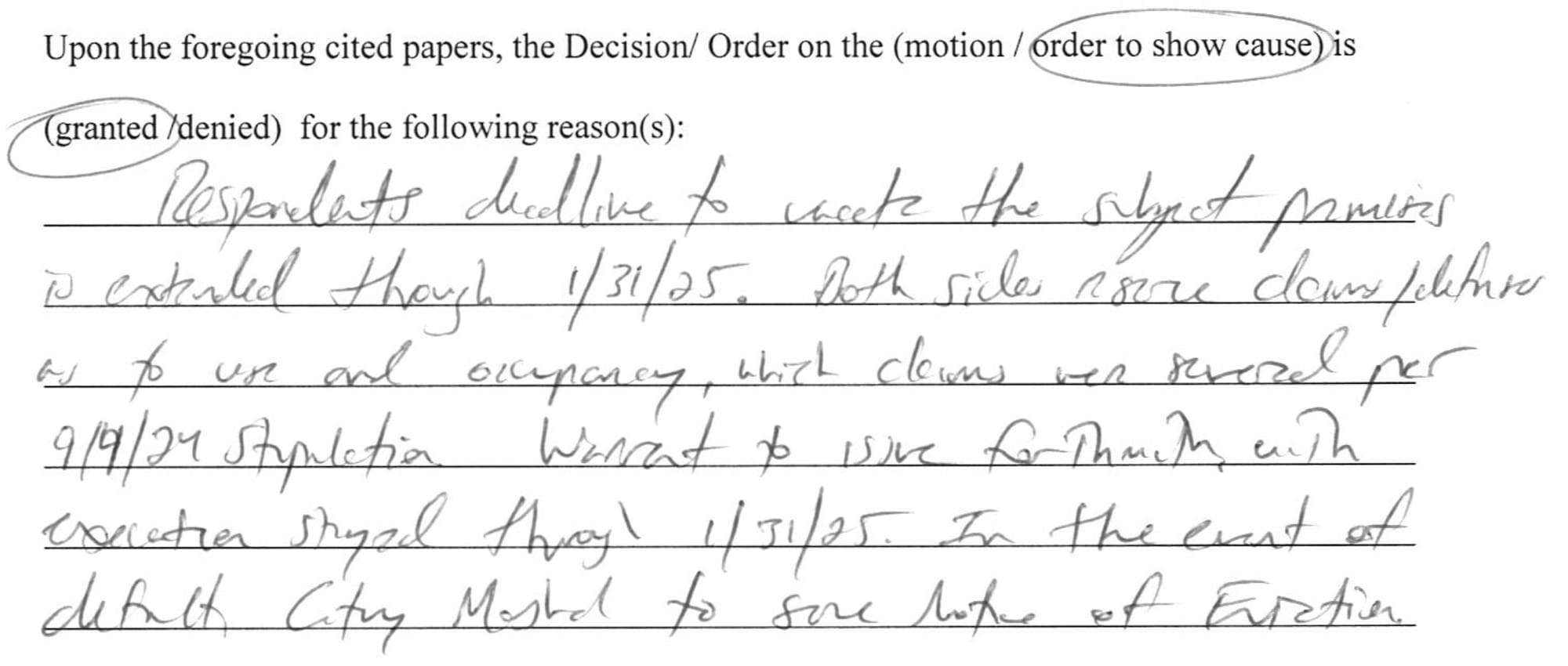Legal professionals often encounter handwritten documents that are critical but difficult to decipher. A recent experience highlighted how technology, specifically ChatGPT, can assist in tackling this challenge. This post reflects on how I used ChatGPT to transcribe and make sense of a handwritten judicial order and what that process taught me about integrating AI into legal practice.
The Problem: Interpreting Handwritten Orders
I was faced with a judicial order handwritten in a style that was, at best, challenging to read:

While key details like deadlines and instructions were included, the handwriting made it difficult to confirm these essential points.
How ChatGPT Helped
I turned to ChatGPT as a tool to assist in transcribing the text. Here’s how I approached the process:
- Uploading the Text: After scanning the handwritten document, I uploaded a screen capture of the handwritten section to ChatGPT for analysis.
- Generating a First Pass: ChatGPT provided an initial transcription.
- Clarifying Ambiguities: I followed up with ChatGPT about the word deadline, and it confirmed my reading.
- Refining the Output: With ChatGPT’s assistance, I was able to refine the transcription into a readable document.
Here’s the final transcription:
Respondents’ deadline to vacate the subject premises is extended through 1/31/25. Both sides reserve claims/defenses as to use and occupancy, which claims were severed per the 9/19/24 Stipulation. Warrant to issue forthwith with execution stayed through 1/31/25. In the event of default, City Marshal to serve Notice of Eviction.
For a detailed look at how ChatGPT assisted in transcribing the document, view the embedded PDF below:
What I Learned
Using ChatGPT in this way revealed several insights:
- AI as a Partner, Not a Replacement: ChatGPT didn’t replace my judgment—it supplemented it. Its ability to process handwritten text was invaluable, but I still needed to interpret the context and verify the final transcription.
- Speed and Efficiency: ChatGPT expedited the process, allowing me to focus on the legal implications rather than deciphering handwriting.
- Limits of AI: While ChatGPT was instrumental, it’s not infallible. Ambiguous handwriting still requires human oversight to ensure accuracy.
The Broader Implications
This experience underscores the growing role of AI in legal practice. From transcription to legal research and document drafting, tools like ChatGPT can assist professionals in saving time and improving accuracy. However, it’s essential to recognize the limitations and continue refining the collaboration between human expertise and AI capabilities.
Conclusion
Decoding handwritten legal documents is a small but significant example of how AI can enhance the practice of law. By leveraging tools like ChatGPT, we can navigate complex tasks more efficiently while ensuring the highest standards of accuracy and professionalism.
Have you used AI for similar challenges in your legal work? Let me know in the comments or reach out—I’d love to hear your thoughts.
Hani Sarji
New York lawyer who cares about people, is fascinated by technology, and is writing his next book, Estate of Confusion: New York.






Leave a Comment